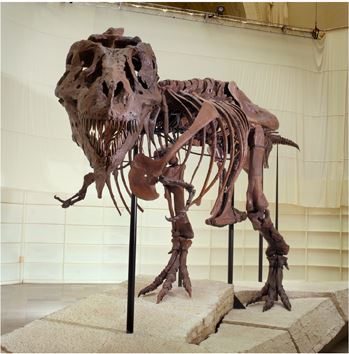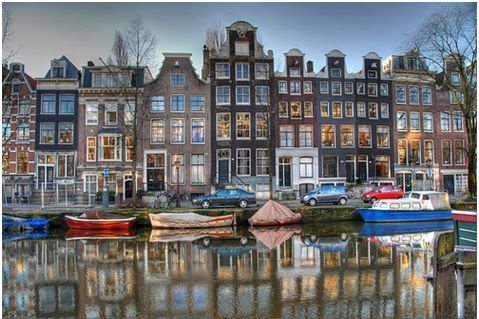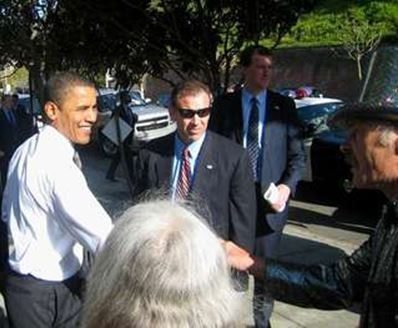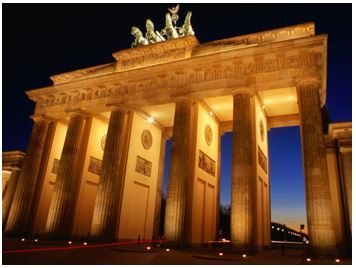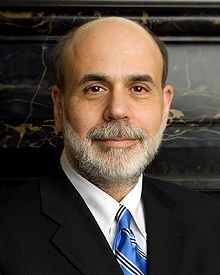
The dinosaur bone market has crunched. Once a favorite collectible of high-flying hedge fund managers, the prices of everything from tyrannosaurus rex to brontosaurus fossils have skidded. A recent auction of a triceratops skeleton failed to reach its minimum bid of $1 million. Even prices for fossilized dinosaur excrement, a popular niche market, have gone down the toilet.
The all-time high for these specimens was hit ten years ago when a T-rex named ?Sue? sold for $10 million, which, after much litigation, ended up in the Field Museum in Chicago. Floor traders in the pits should pay a visit to the museum to see what a real predator really looks like.
Dealers were hoping that the sale of a rare three foot tall, 18,000 year old possible pre human hominid, homo floresiensis, discovered in Indonesia, would help revive the market. Alas, the price came up short.
Meet ?Sue?
Yale professor, Robert Shiller, is the kind of imp like, peripatetic college professor you might expect to find in a Disney movie. Highly animated and jumping from one radical idea to the next it is hard to keep up with his stream of consciousness torrent of economic innovations. After a two-hour barrage, I was so intellectually exhausted that all I could do when I returned home was to plop down on the sofa with a Jack on the rocks and watch Fox News.
You know Robert Shiller as the creator of the Standard & Poors-Case Shiller Real Estate Index, which tracks 20 major residential housing markets around the US. His data was originally the domain of a handful of real estate brokers with a theoretical bent or securitizing investment bankers. But when the real estate collapse began to accelerate in 2007, it suddenly became the data point du jour for every property investor, business news network, and hedge fund manager.
Shiller is a devout non-believer of the efficient market theory espoused by Eugene Fama of the University of Chicago. He thinks that financial markets are so emotional that they are beyond rational analysis. The systemic vulnerability of financial markets was a major cause of the 2008 crash and is still not well understood. He argues that people should have a 100-year time horizon when making investments, because that?s how long today?s children will live. Does anyone have the trading call for the Spring of 2113? (No typo!).
He says that teaching finance today is about as popular as being the university Reserve Officer Training Corps (ROTC) instructor during the Vietnam War. People are angry at bankers, as the Occupy Wall Street crowd has so amply shown, which Shiller sees as our own ?Arab Spring?. Since 1990, the top 1% of the wealthy have seen their net worth soar by 60%, while it has fallen for the other 99%.
When Occupiers discovered that their movement could cause governments to fall, it rapidly spilled beyond its Madrid, Spain origins. But the financial industry is not all bad. Witness the miracle in emerging markets which has been made possible through new capital provided by western investment bankers.
Robert titillated me with some highly creative innovations which we may see adopted in coming years. I?ll give you the highlights.
*Options on individual real estate markets, now five years old, will go mainstream and finally become liquid as individuals seek to protect their home equity during economic downturns. This will become a major area of new profits for Wall Street.
*?Continuous mortgages? should be created whereby the debt is never paid off, but is assumed from one owner to the next in exchange for a higher interest rate. If you package many of these together and securitize them, it would be a major step towards clearing out the massive inventory of unsold homes.
*The government already issues plenty of bonds and next should sell equity in itself in one-trillionth increments. That puts the value of the government?s share price today at about $16.00. If the economy grows, the share price should go up.
*Tax rates for the wealthy should rise with inequality. The more wealth that is concentrated with the 1%, the higher the maximum tax rate should go. Remember, the maximum rate was 90% at the time of the Roosevelt administration during the Great Depression, nearly triple today?s 39% rate.
*The actual impact of high frequency traders, who he refers to as ?millisecond traders?, is vastly exaggerated.
*Although the new ?crowd funding? bill just signed by president Obama has been described as the ?Boiler Room Full Employment Act?, it will provide a valuable source of venture capital for micro startups. Those earning only $40,000 a year are limited to an $800 bet, with the maximum legal investment set at $10,000.
*Some 14% of the total economic activity of the US involves security. Just having people watching people is an enormous waste of resources.
*For profit nonprofits, called benefit corporations, should proliferate to advance specific social goals. These should work well as they pay little in wages and enjoy community support. They are already legal in eight states.
If you would like to attend one of Shiller?s classes for free and expose yourself to more out of the box economic thinking, you can do so through regular offerings of his online courses. To sign up for Open Yale University, which Time magazine lists as one of the top websites, please click the following link: ?http://oyc.yale.edu.
Global Market Comments
July 10, 2013
Fiat Lux
Featured Trade:
(JULY 12 AMSTERDAM STRATEGY LUNCHEON),
(PLEASE USE MY FREE DATA BASE SEARCH),
(DRINKS WITH THE PRESIDENT)
Come join John Thomas for lunch at the Mad Hedge Fund Trader?s Global Strategy Update, which I will be conducting in Amsterdam, The Netherlands, on Friday, July 12, 2013. A three-course lunch will be followed by a PowerPoint presentation and an extended question and answer period.
I?ll be giving you my up to date view on stocks, bonds, foreign currencies, commodities, precious metals, and real estate. And to keep you in suspense, I?ll be throwing a few surprises out there too. Enough charts, tables, graphs, and statistics will be thrown at you to keep your ears ringing for a week. Tickets are available for $229.
The lunch will be held at a downtown Amsterdam hotel near Nieumarkt that will be emailed with your purchase confirmation.
I look forward to meeting you, and thank you for supporting my research. To purchase tickets for the luncheons, please go to my online store.
President Barack Obama certainly arrives at a party like a rock star. Three silver GM Suburban?s flanking an armored black Cadillac limo screech to a halt with lights flashing. All of the roads in the immediate vicinity are closed to traffic.
A dozen sunglass bedecked Secret Service agents leap out, immediately scanning the perimeter. The president bounds out and briskly walks to the plush home of a wealthy supporter.
I managed to briefly touch base with the president during his recent fund raising swing through the San Francisco Bay area. For a mere $32,000 donation to the Democratic National Committee, I received a sweaty handshake and a thank you from the former South Chicago community organizer.
It was all part of a broad swing through the Western states to rally the faithful, and to top off the DNC's coffers, which has raised a record $50 million in California this year. Perhaps Obama just wants to be among friends. While his national job approval rating languishes at 47%, it is 55% here, and an eye popping 72% among Democrats.
Since the 2008 election, some 6 million millennials, generation Y's, or echo boomers have gained the right to vote. Have you spoken to your kids lately? The only issues they care about, the environment, global warming, gay rights, and ending the war, are overwhelmingly Democratic ones. Another 4 million immigrants have also joined the voter rolls.
Sure, only 30% of these groups vote at all. But when election results swing on majorities that can be counted in the hundreds, think Florida in 2000, Ohio in 2004, and Minnesota in 2008, they could make a decisive difference.
The polls we see reported daily are only taken of participants with land lines. So they may be undercounting both cell phone addicted, texting millennials, and immigrants. How many of your kids have land lines? My bet would be none.
Now, let me throw one big unknown out there. Thanks to the Supreme Court's Citizens United vs. the Federal Election Commission decision, the most recent election was the first to see unlimited anonymous corporate donations since the sixties. As a result, the number of election ads disclosing donors has fallen from 97% in 2006 to 32%.
California's proposition 23 was a perfect example of what this means. Billed as the 'Save California jobs bill,' the measure was placed on the ballot and promoted by $6 million in financing from Texas base energy giant Tesoro Petroleum (TSO). And what is the company's plan to create California jobs? Suspend the state's stringent environmental regulations so it could build a new oil refinery in nearby Martinez.
In every postwar election, the party in power has lost an average 27 House seats in the midterm elections. Obama knew this the day he walked into office. That is why the most radical parts of his agenda, like health care, were front end loaded. Expect to hear much about the President's surprise, Clintonesque move to the middle, which was in fact, planned two years ago.
Yes, I know, I should stick to my day job of calling every turn in the market. But sometimes, that profession and making political prognostications become one in the same. Knowing who the next president is going to be is an immensely valuable piece of market information, as the economic philosophies of the two parties are so radically different.
Do you think the White House situation room has a ladies room?
Global Market Comments
July 9, 2013
Fiat Lux
Featured Trade:
(JULY 16 BERLIN STRATEGY LUNCHEON),
(WHO IS BEN BERNANKE?),
(KEEP INDONESIA ON YOUR RADAR), (IDX),
(WHY WE NEED SIX NEW SAUDI ARABIA?S)
(USO), (RIG), (XOM), (OXY)
Market Vectors Indonesia Index ETF (IDX)
United States Oil (USO)
Transocean Ltd. (RIG)
Exxon Mobil Corporation (XOM)
Occidental Petroleum Corporation (OXY)
Come join John Thomas for lunch at the Mad Hedge Fund Trader?s Global Strategy Update, which I will be conducting in Berlin, Germany, at 12:00 noon on Tuesday, July 16, 2013. A three-course lunch will be followed by a PowerPoint presentation and an extended question and answer period.
I?ll be giving you my up to date view on stocks, bonds, foreign currencies, commodities, precious metals, and real estate. And to keep you in suspense, I?ll be throwing a few surprises out there too. Enough charts, tables, graphs, and statistics will be thrown at you to keep your ears ringing for a week. Tickets are available for $219.
The lunch will be held at a downtown Berlin hotel within sight of the Brandenburg Gate, the details of which will be emailed with your purchase confirmation.
I look forward to meeting you, and thank you for supporting my research. To purchase tickets for the luncheons, please go to my online store.
Since nothing less than the fate of the free world depends on the judgment of Ben Bernanke these days, I thought I?d touch base with David Wessel, the Wall Street Journal economics editor, who has just published In Fed We Trust: Ben Bernanke?s War on the Great Panic.
I doubted David could tell me anything more about the former Princeton professor I didn?t already know. I couldn?t have been more wrong, as David gave me some fascinating insights into the inner soul of our much-vaunted Chairman of the Federal Reserve.
Bernanke was the smartest kid in rural Dillon, South Carolina, who, through a series of improbable accidents, and intervention by a local black civil rights leader, ended up at Harvard. He built his career on studying the Great Depression, then the closest thing to paleontology economics had to offer, a field focused so distantly on the past that it was irrelevant. Bernanke took over the Fed when Greenspan was considered a rock star, inhaling his libertarian, free-market, Ayn Rand inspired philosophy in great giant gulps.
Within a year the economy had suddenly transported itself back to the Jurassic Age, and the landscape was suddenly overrun with T-Rex?s and Brontosauri. He tried to stop the panic 150 different ways, 125 of which were terrible ideas, the remaining 25 saving us from the Great Depression II. This is why unemployment is now only 7.6%, instead of 25%.
The Fed governor is naturally a very shy and withdrawing person, and would have been quite happy limiting his political career to the Princeton, NJ school board. To rebuild confidence, he took his campaign to the masses, attending town hall meetings and pressing the flesh like a campaigning first term congressman.
The price tag for Ben?s success has been large, with the Fed balance sheet exploding from $800 million to $3.6 trillion, solely on his signature. The true cost of the financial crisis won?t be known for a decade or more. The biggest risk is that we grow complacent, having pulled back from the brink, and let desperately needed reforms of the financial system and the rebuilding of Fannie Mae and Freddie Mac slide.
How Bernanke unwinds this bubble will define his legacy. Too soon, and we go back into a real depression. Too late, and hyperinflation hits. That?s when we find out who Ben Bernanke really is.
If you are looking for another emerging market to add to your list of things to buy on dips, then take a look at Indonesia (IDX). The world?s largest Muslim country offers a combination that I love, a population with great demographics that is also a major energy and commodities exporter.
The archipelago is the biggest country in Southeast Asia and a huge exporter of oil and LPG to Japan on long-term contracts. (An old friend of mine torched their Borneo fields at the beginning of WWII, and spent four years in a Japanese prison camp for his troubles.) Other big exports include marvelous textiles, rubber, and increasingly rare tropical hardwoods. Another plus is one of the world?s most pro growth population pyramids (see below).
The global financial crisis only knocked their growth rate from 6.1% to 4.5%, and now it is back above 6%. No doubt, $63 billion of direct foreign investment into the country helped. A series of tax reforms promise to keep the train moving, cutting the top corporate rate from 30% in 2008 to 28% in 2009, and 25% in 2010. Wisdom Tree had the ?wisdom? to launch the country?s first ETF (IDX) in January, 2009 (what timing!), which became one of the best performers of the year, rocketing over 300% from the lows to $60.
Islamic inspired terrorism is still a lingering concern. I keep Indonesia in the category of highly volatile, high risk, high return frontier markets that you only want to buy on a big dip. Keep it on your radar.
 Meet Your New Investors in Indonesia
Meet Your New Investors in Indonesia
I recently spent an evening with Ambassador Richard Jones, the Deputy Executive Director of the International Energy Agency in Paris, who had some eye opening things to say about the energy space. The IEA was first set up as a counterweight to OPEC during the oil crisis in 1974, and has since evolved into a top-drawer energy research organization.
World GDP will grow an average 3.1%/year through 2030, driving oil demand from the current 84 million barrels/day to 103 million b/d. That means we will have to find the equivalent of six Saudi Arabia?s to fill the gap or prices are going up, possibly a lot. His conservative target has crude at $190 in twenty years. Some 39% of that increase in demand will come from China and 15% from India.
A collapse in investment caused by the financial crisis means that supply can?t recover in time to avoid another price spike. More than 1.5 billion people today don?t have electricity at all, but would love to have it. The best the climate negotiations can hope for is for CO2 to rise until 2020, and then plateau after that, because once this greenhouse gas enters the atmosphere it is very hard to get out.
This will require a massive decarbonization effort reliant on nuclear, hydro, alternatives, and carbon capture and storage. Up to half of the needed carbon reduction can be achieved through simple efficiency measures, like ditching the incandescent light bulb, driving more hybrids, and closing dirty, old coal fired power plants. Natural gas will be a vital bridge, as it is cheap, in abundant supply, and emits only half the carbon of traditional fossil fuels. The total 20-year bill for the rebuilding of our new energy infrastructure will exceed $10 trillion.
Richard, who comes from a long diplomatic career in Kuwait, Kazakhstan, and Israel, certainly didn?t pull any punches. I have been a huge fan of the IEA?s data for 35 years. Better use any weakness in oil prices to accumulate long term positions in crude through the futures, the ETF (USO), the offshore drilling companies like Transocean (RIG), and oil and gas plays like ExxonMobil (XOM)? and Occidental Petroleum (OXY). When oil comes back, it will do so with a vengeance.

